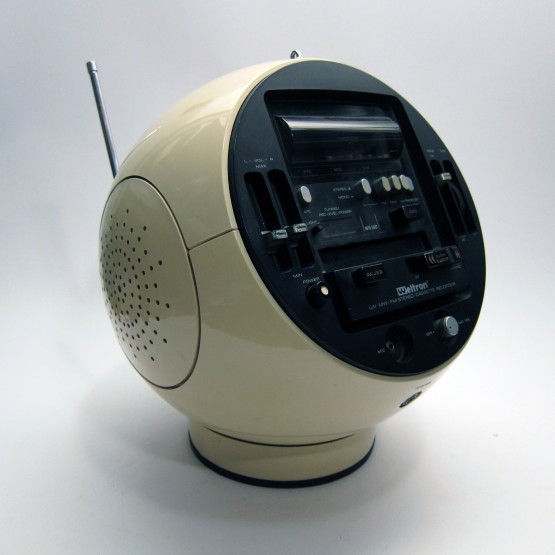There is a scene in Return of the Jedi when Luke Skywalker defeats the monstrous, man-eating Rancor, crushing its skull with a portullis, and we see the beast’s keeper, a portly shirtless gentleman in leather breeches and headgear, weeping over the loss of his beloved friend. I think of this scene when I read about a night in 1974 at San Francisco’s Winterland Ballroom when Grateful Dead drummer Mickey Hart walked on the stage and found the band’s sound engineer Owsley “Bear” Stanley standing in front of “a solid wall of over 600 speakers.”
As Enmore Audio tells it:
Tears streamed down his face and he whispered to the mass of wood, metal, and wiring, with the tenderness of any parent witnessing their child’s first recital, “I love you and you love me—how could you fail me?”
The story sums up Owsley’s total dedication to what became known as “The Wall of Sound,” a feat of technical engineering that “changed the way technicians thought about live engineering.” The “three-story behemoth… was free of all distortion… served as its own monitoring system and solved many, if not all of the technical problems that sound engineers faced at that time.” But, while it had required much trial and error and many refinements, it did not fail, as you’ll learn in the Polyphonic video above.
Live sound problems not only bedeviled engineers but bands and audiences as well. Throughout the sixties, rock concerts grew in size and scope, audiences grew larger and louder, yet amplification did not. Low-wattage guitar amps could hardly be heard over the sound of screaming fans. Without monitoring systems, bands could barely hear themselves play. This “noise crisis,” writes Motherboard, “confronted musicians who went electric at the height of the war in Vietnam,” but it has been “routinely snuffed from the annals of modern music.”
In dramatic recreations of the period, drums and guitars boom and wail over the noise of stadium and festival crowds. For ears accustomed to the power of modern sound systems, the actual experience, by contrast, would have been underwhelming. Most Beatles fans know the band quit touring in 1966 because they couldn’t hear themselves over the audience. Things improved somewhat, but the Dead, “obsessed with their sound to compulsive degrees,” could not abide the noisy, feedback-laden, underpowered situation. Still, they weren’t about to give up playing live, and certainly not with Owsley on board.
“A Kentucky-born craftsman and former ballet dancer”—and a manufacturer and distributer of “mass quantities of high-grade LSD,” whose profits financed the Dead for a time—Owsley applied his obsession with “sound as both a concept and a physical thing.” To solve the noise crisis for the Dead, he first built an innovative sound system in 1973 (after serving a couple stints in prison for selling acid). The following year, he suggested putting the PA system behind the band, “a crazy idea at the time.”
His experiments in ‘74 evolved to include line arrays—“columns of speakers… designed to control the dispersion of sound across the frequency range”—noise-canceling microphones to clear up muddy vocals, six separate sound systems that could isolate eleven channels, and a quadraphonic encoder for the bass, “which took a signal,” Enmore notes, “from each string and projected it through its own set of speakers.” The massive Wall of Sound could not last long. It had to be streamlined into a far more manageable and cost-effective touring rig. All the same, Owsley and the band’s willingness take ideas and execution to extreme lengths changed live sound forever for the better.
Related Content:
11,215 Free Grateful Dead Concert Recordings in the Internet Archive
The Grateful Dead’s Final Farewell Concerts Now Streaming Online
Josh Jones is a writer and musician based in Durham, NC. Follow him at @jdmagness






